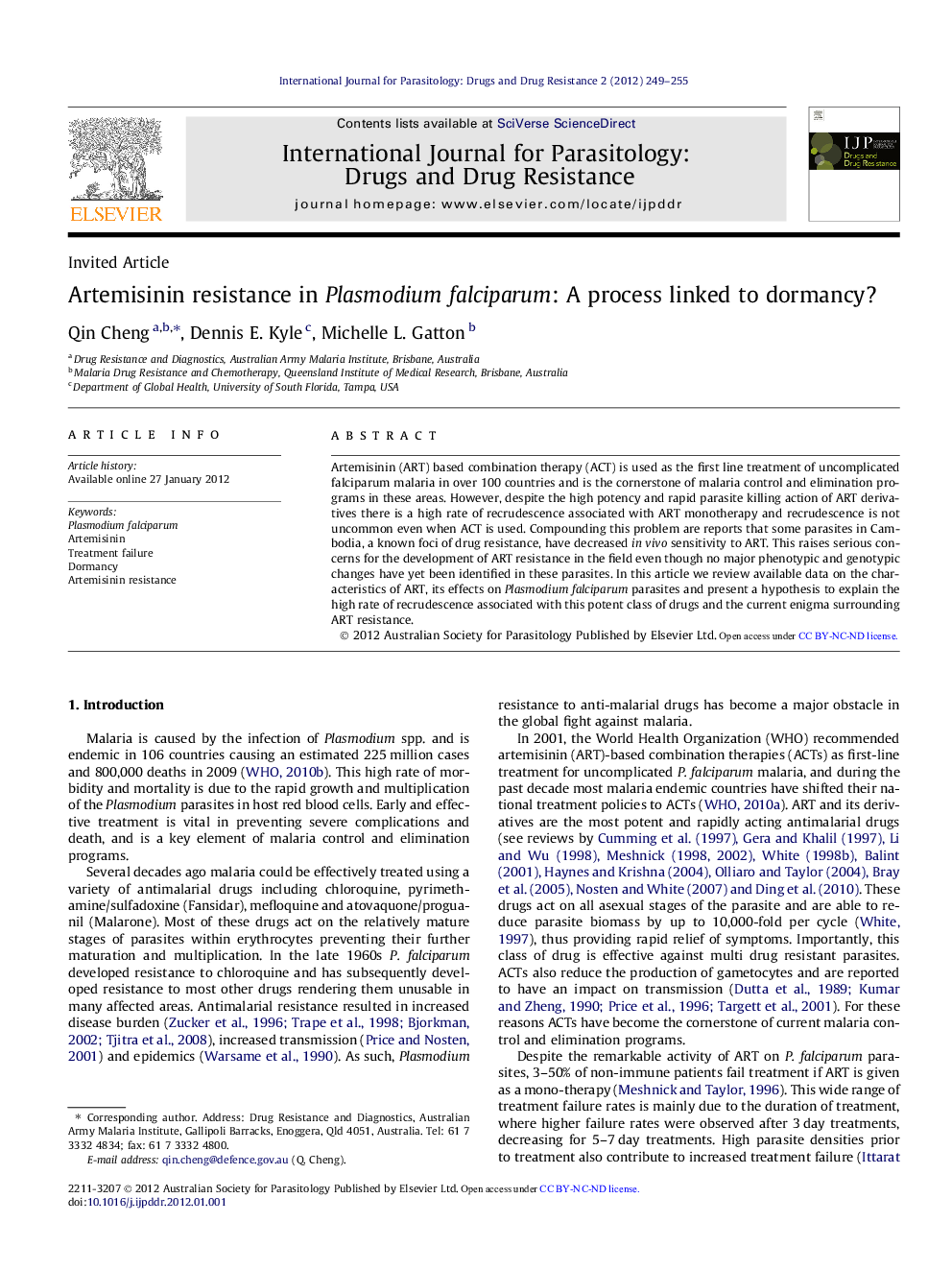| Article ID | Journal | Published Year | Pages | File Type |
|---|---|---|---|---|
| 2054727 | International Journal for Parasitology: Drugs and Drug Resistance | 2012 | 7 Pages |
Artemisinin (ART) based combination therapy (ACT) is used as the first line treatment of uncomplicated falciparum malaria in over 100 countries and is the cornerstone of malaria control and elimination programs in these areas. However, despite the high potency and rapid parasite killing action of ART derivatives there is a high rate of recrudescence associated with ART monotherapy and recrudescence is not uncommon even when ACT is used. Compounding this problem are reports that some parasites in Cambodia, a known foci of drug resistance, have decreased in vivo sensitivity to ART. This raises serious concerns for the development of ART resistance in the field even though no major phenotypic and genotypic changes have yet been identified in these parasites. In this article we review available data on the characteristics of ART, its effects on Plasmodium falciparum parasites and present a hypothesis to explain the high rate of recrudescence associated with this potent class of drugs and the current enigma surrounding ART resistance.
Graphical abstractFigure optionsDownload full-size imageDownload as PowerPoint slideHighlights• Artemisinin induced dormancy is a plausible cause of treatment failure. • Dormancy is likely a parasite stress response triggered by artemisinin. • Artemisinin resistance may develop as a 2 step process linked with dormancy. • Step one involves ring stage resistance reflected by changes in the dormancy profile. • Step two resistance develops due to reduced susceptibility of mature stages.
